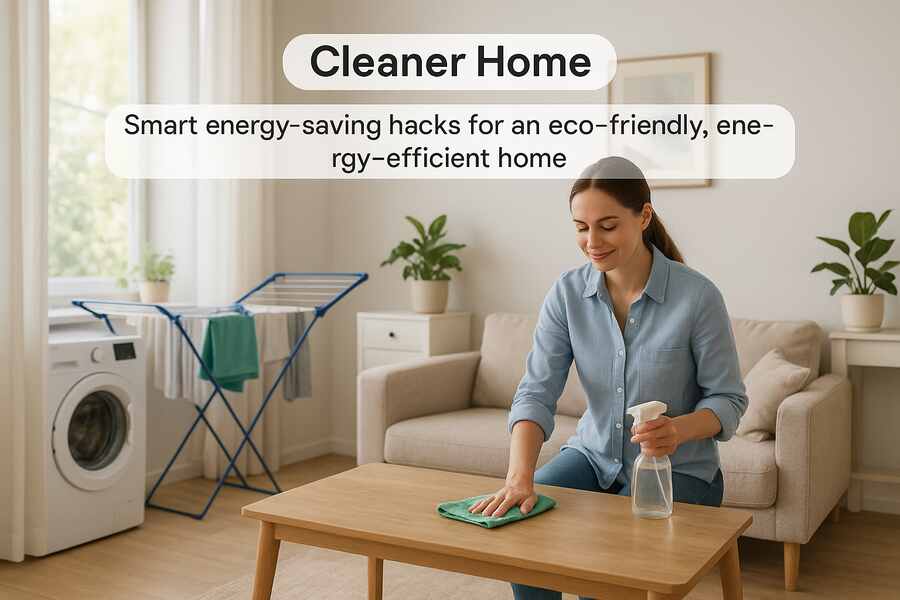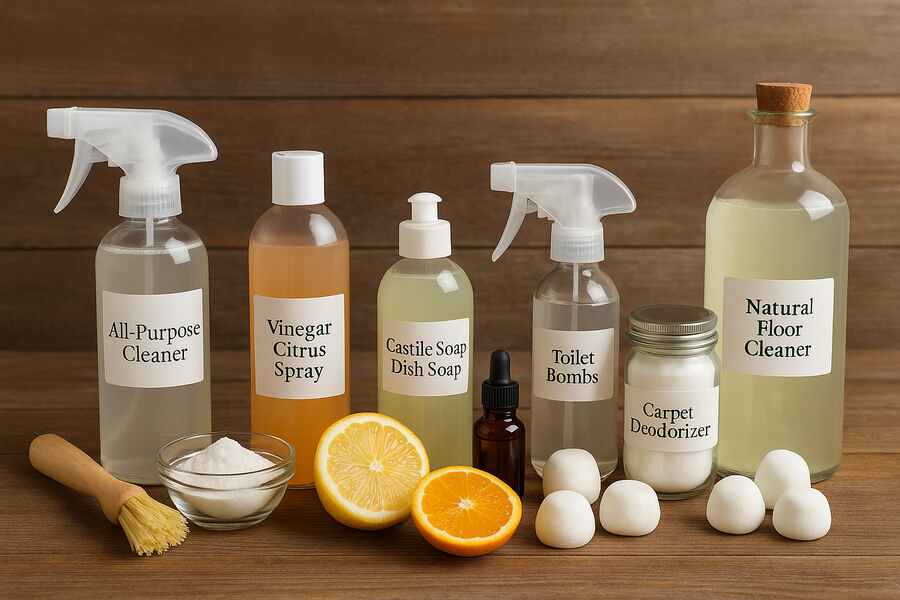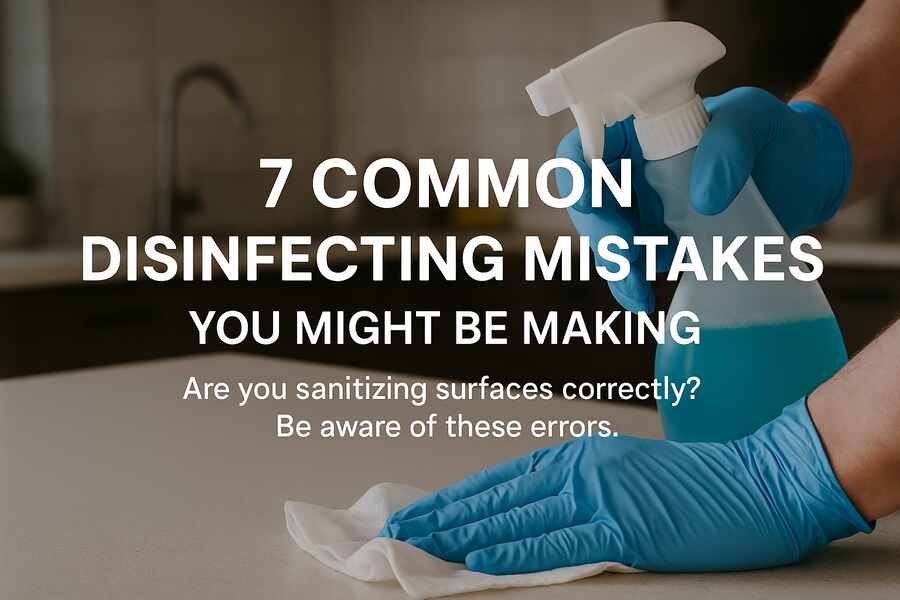Smart Energy-Saving Hacks for a Cleaner Home

Cleaner Home: Smart Energy-Saving Cleaning Hacks
Have you ever been afraid that making your house so clean is a cover to increase energy costs? Most of us are concerned with scrubbing, vacuuming and disinfection without actually paying much attention to the amount of electricity and water we are consuming in the process. Cleaning may even use a lot of energy than you imagine; from the functioning of the washing machine, vacuum cleaner, and dryer, among others.
The silver lining is that you do not have to spend your money or burn the resources of our planet to have a tidy house. Through some clever use of changes and green ways of living, you can save a lot of energy but still live to the same high standards of cleanliness. This is the way you can do it.
1. Install Energy-Saving Appliances
An energy-saving tip that is not very hard to make is to purchase energy-efficient appliances when Bond Cleaning Sunnybank. New and improved washing machines, vacuum cleaners and dishwashers will consume less electricity and water as compared to the old machines. In buying appliances, seek those that have a high Energy Star rating, as the efficiency is tested.
As an example, a dishwasher can be energy efficient and require less water and heat to get the dishes clean. The same case applies to using a vacuum concentrator with adjustable suction levels, where the suction levels can be adjusted in order to clean various surfaces without using excess power.
2. Wash clothing in Cold Water
A lot of energy is required to heat the laundry water. Most of the time, there is no need to use warm water to clean your clothes, especially since modern detergents are created to perform well in cold water. With the change of customising water to cold wash, you can save as much as 90 per cent of energy invoked in the warm wash cycle.
Also, ensure that you wash full loads rather than small loads. This will ensure maximum efficiency of your machine and less number of cycles required.
3. Wash or Air-Dry Clothes and Dishes
Dishwashers and dryers require a lot of electricity to work since they operate on heated air. Rather, air-dry your garments by using a clothesline or a drying rack. This saves both energy as well as increases the life of the clothes as it does not subject them to prolonged exposure to heat.
Equally, once you have run your dishwasher, then open the door and allow dishes to naturally air-dry as opposed to using the heated drying system. This simple measure can reduce the level of energy consumption considerably.
4. Clean with Natural Light
Why switch to using all lights when cleaning the place when you can utilise sunlight? Keep your cleaning habits at daytime when light comes in naturally at home. When at home, open windows and curtains to allow the sunlight as they not only save electricity but also help in disinfecting surfaces naturally, as sunlight has antibacterial effects.
Washing in daytime will also enable you to notice dust, stains or smudges better than in artificial light, so your work will be more productive.
5. Manual Tools Wherever You Can
It is not always an electric device needed to do cleaning. When possible, use manual equipment. Such. Brooms, microfiber cloths and mops, rather than powered versions of these. To give you an example, instead of using an electric vacuum to clean your hardwood floors, you can use a broom just as well, and it does not require any electricity.
Wipes are less utilised because microfiber cloth can be used to dust without the need for wipes or powered dusters that expend energy and spend money.
6. Multipurpose Cleaners
When there is more than one cleaning product, one needs to rinse and use more hot water. Rather, change to all-purpose environment-friendly cleaners that can be used on all surfaces. By having fewer products, you use less water since you do not have to wash and rinse as much and use less energy that is needed to heat the water.
Better still, you can use household items such as vinegar, baking soda, lemon and other things to create your cleaners. These are non-toxic solutions since they are natural products, safe and effective, and the energy information is that, in order to clean them, not much is needed in the way of rinsing.
7. Repair Appliances to be More Efficient
The dirty or clogged appliances need to work harder, using more energy. Clean the vacuum filters, clear the sinkage arms in the dishwasher, and descale your washing machine regularly to maintain a clean working state. The seals in ovens and refrigerators need to be sealed so that no loss of energy is incurred, and cleaning, gaskets, and defrosting freezers will help in bringing might efficiency.
By ensuring that your appliances are clean and well taken care of, they end up performing better and using less power per cleaning cycle.
8. Outsource Your Cleanliness Jobs
There is no need to use appliances twice a day and so on, which wastes energy. Rather, you should batch your cleaning to use less. An example is to wait until you have a full load prior to using the washing machine or dishwasher. Likewise, clean more than one room at a time instead of turning the appliance off and on many times on a daily basis.
This will reduce energy surges, and you will accomplish a lot with the minimum number of moves, which makes your cleaning process efficient and green.
Conclusion
Energy efficiency does not have to be compromised when maintaining the orderly condition of your home. By making the smart decisions of using energy-conserving appliances, doing more of their laundry in cold water, using natural light whenever possible, and such things as air-drying and grouping the cleaning tasks, one can not only have energy bills reduced, but also come out with a pristine living area.
These green habits are not only reducing expenses, but also making the future a little greener. Thus, whenever you want to use that mop or that washing machine, remember that you can save energy because a really healthy home should also be healthy for the environment.


